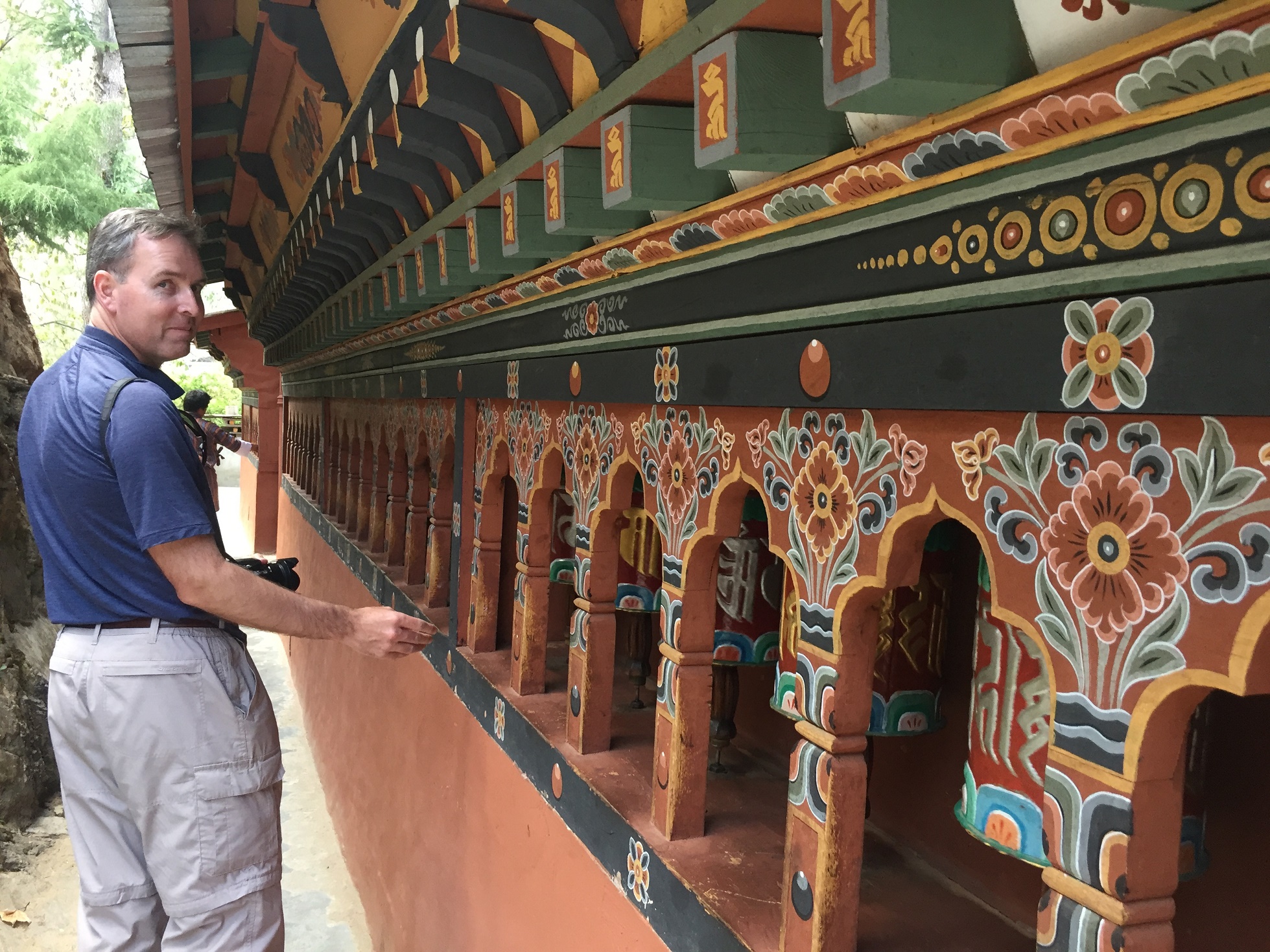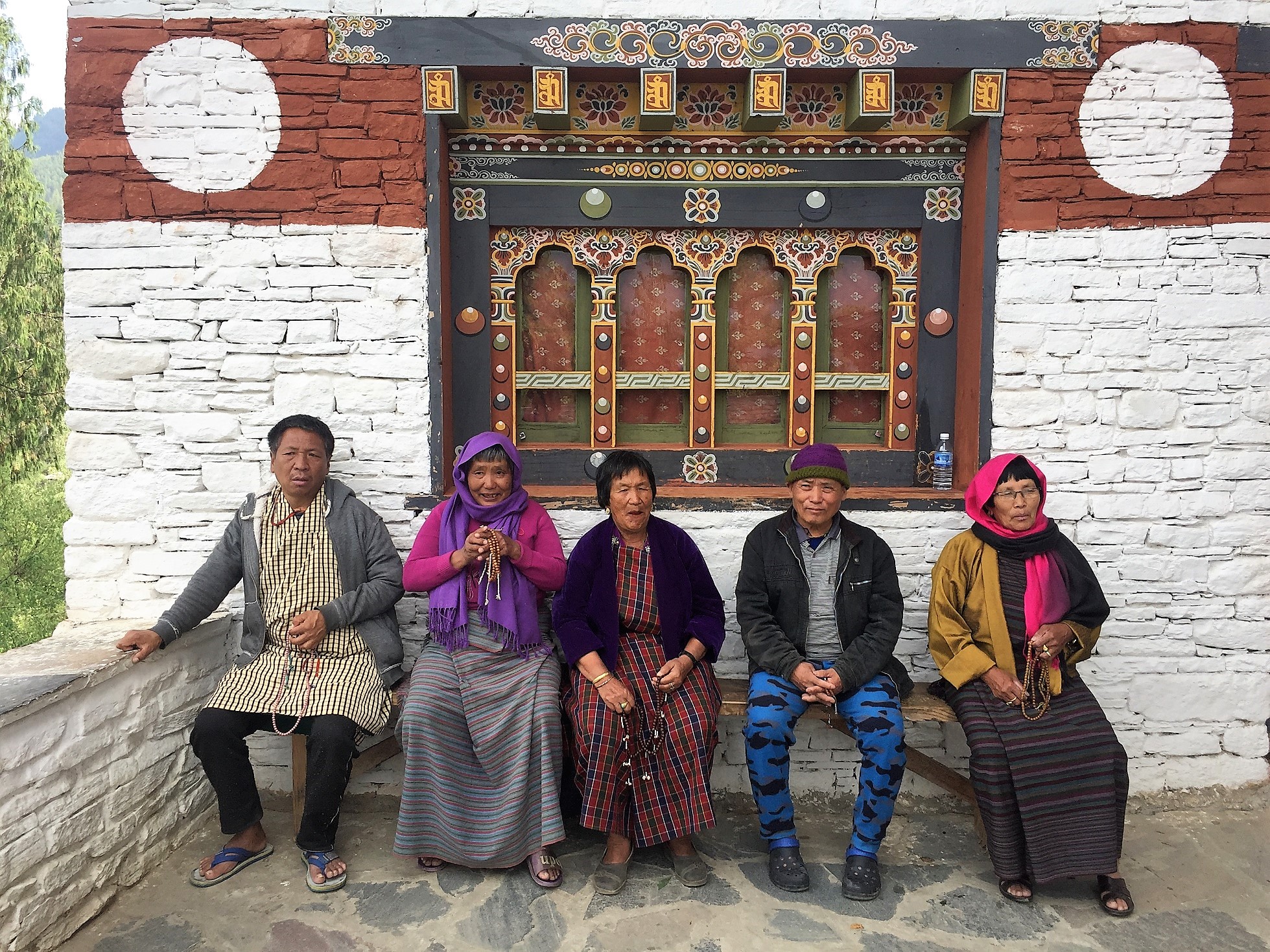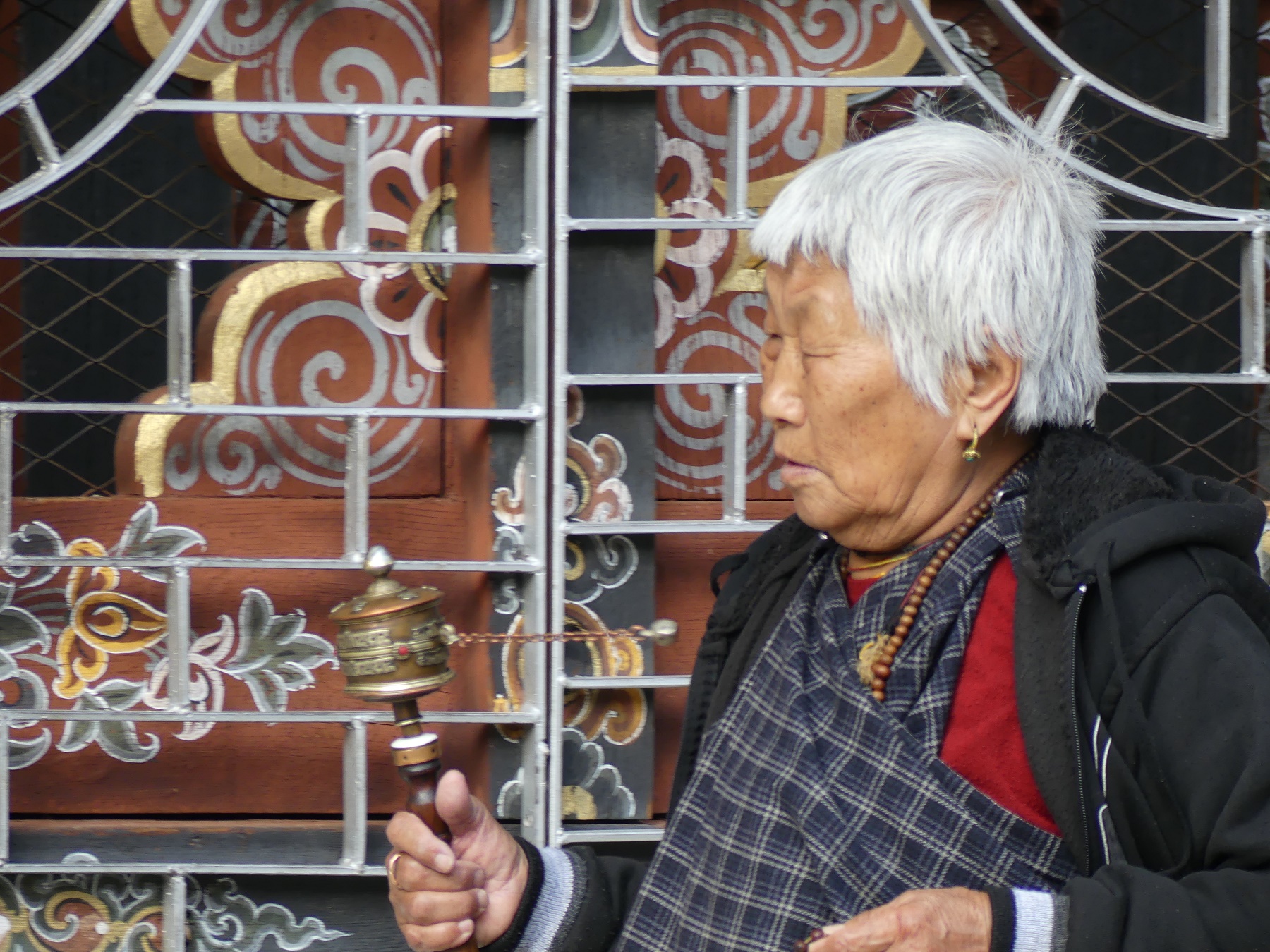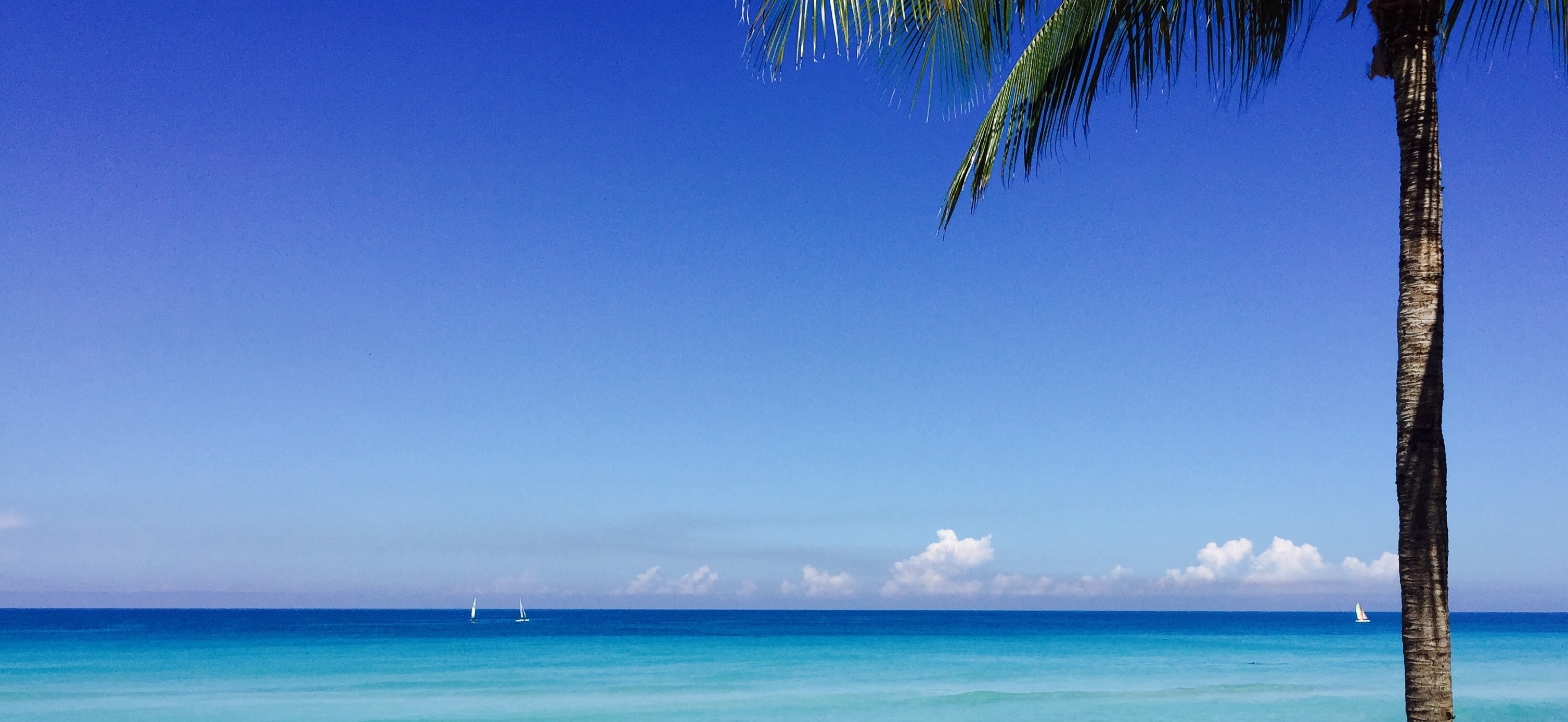We were on our way to our final stop in Asia: Bhutan.
We wanted to get to the airport early this morning because 1) we wanted to miss the traffic and 2) we wanted seats on the left hand side of the aircraft to see Everest. Unfortunately we only managed to do one of the two. The flight from Kathmandu to Paro routes right alongside the giant Himalaya range providing exquisite views of Everest and others on a clear day. Today was a clear day but we were on the wrong side of the plane. Our plane was small so we could lean over the aisle, but we could still only catch glimpses.
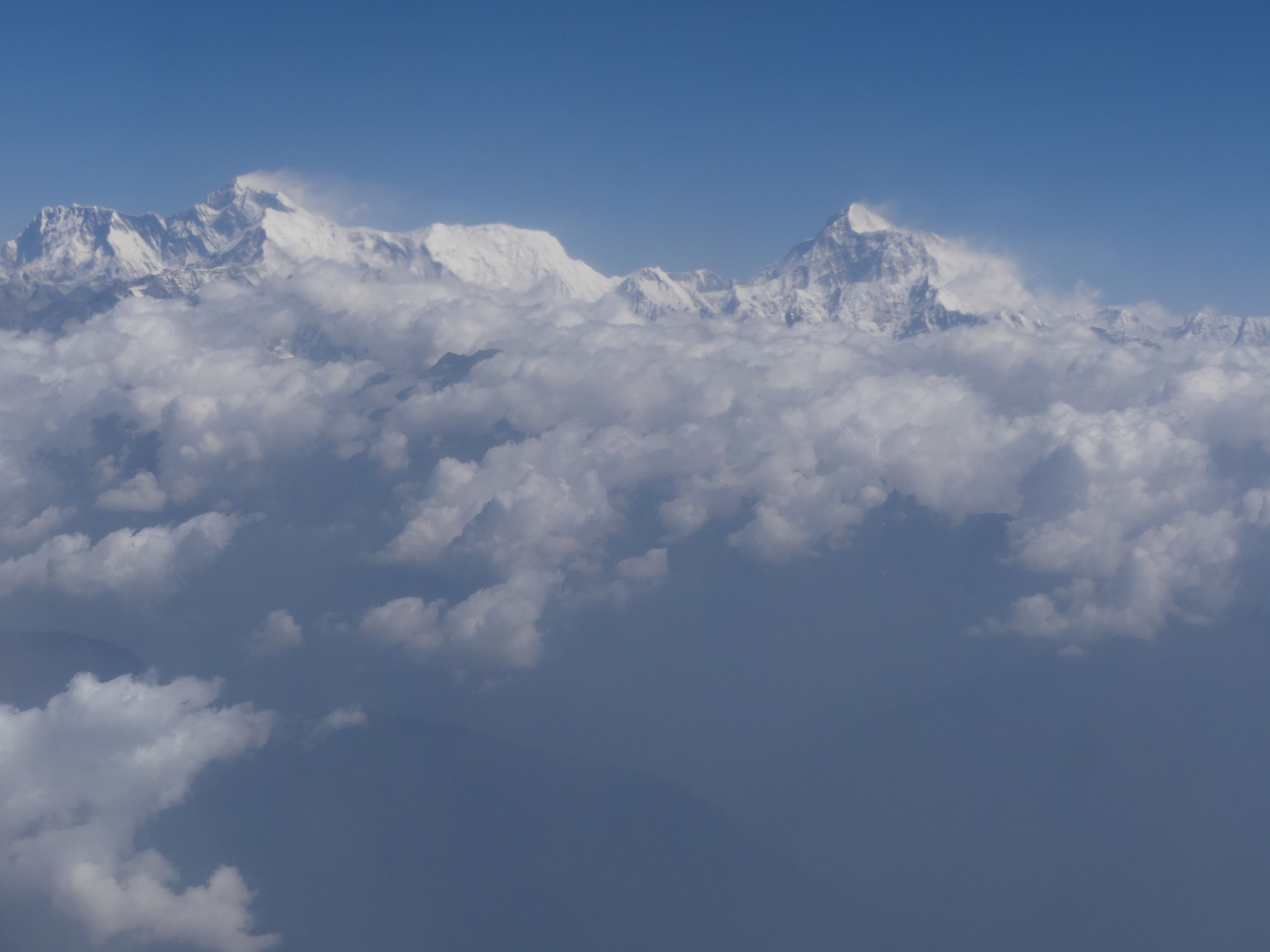
But because the plane was tiny we had a very cool ride into Paro airport. And by cool I mean bumpy. The route into the runway was very turbulent, dodging mountains slopes as we descended. I loved it although it looked like there were a few nervous passengers.
From the moment we landed at Paro, we quickly realised that we had flown into a uniquely different, magical country. Surrounded by soaring emerald green mountains the air was noticeably fresher than anywhere else in Asia. We were welcomed by our guide, attired in the national dress that looks like a cross between a kilt and a kimono, who draped a white silk scarf over our heads. Welcome to the Land of the Thunder Dragon!
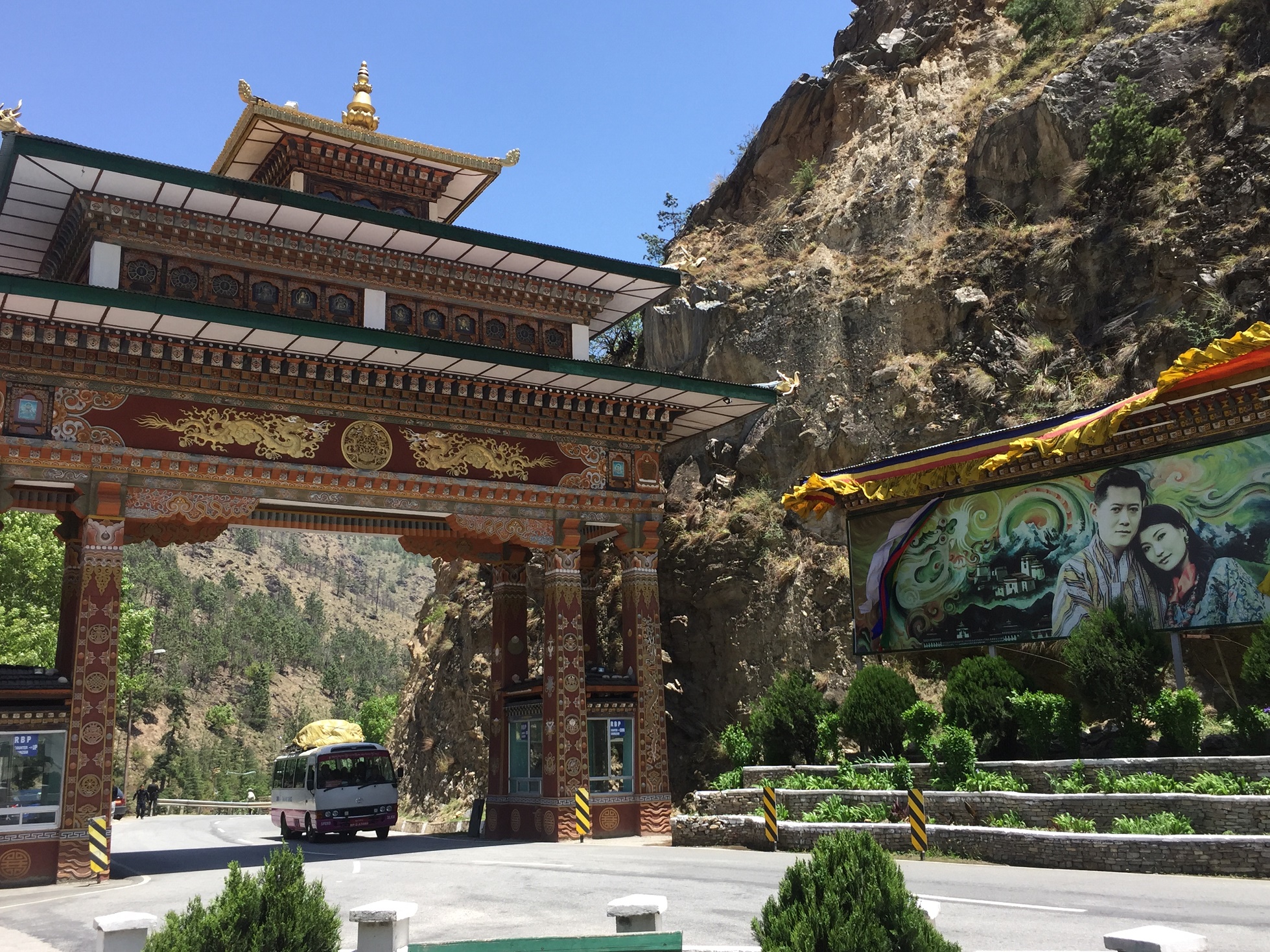
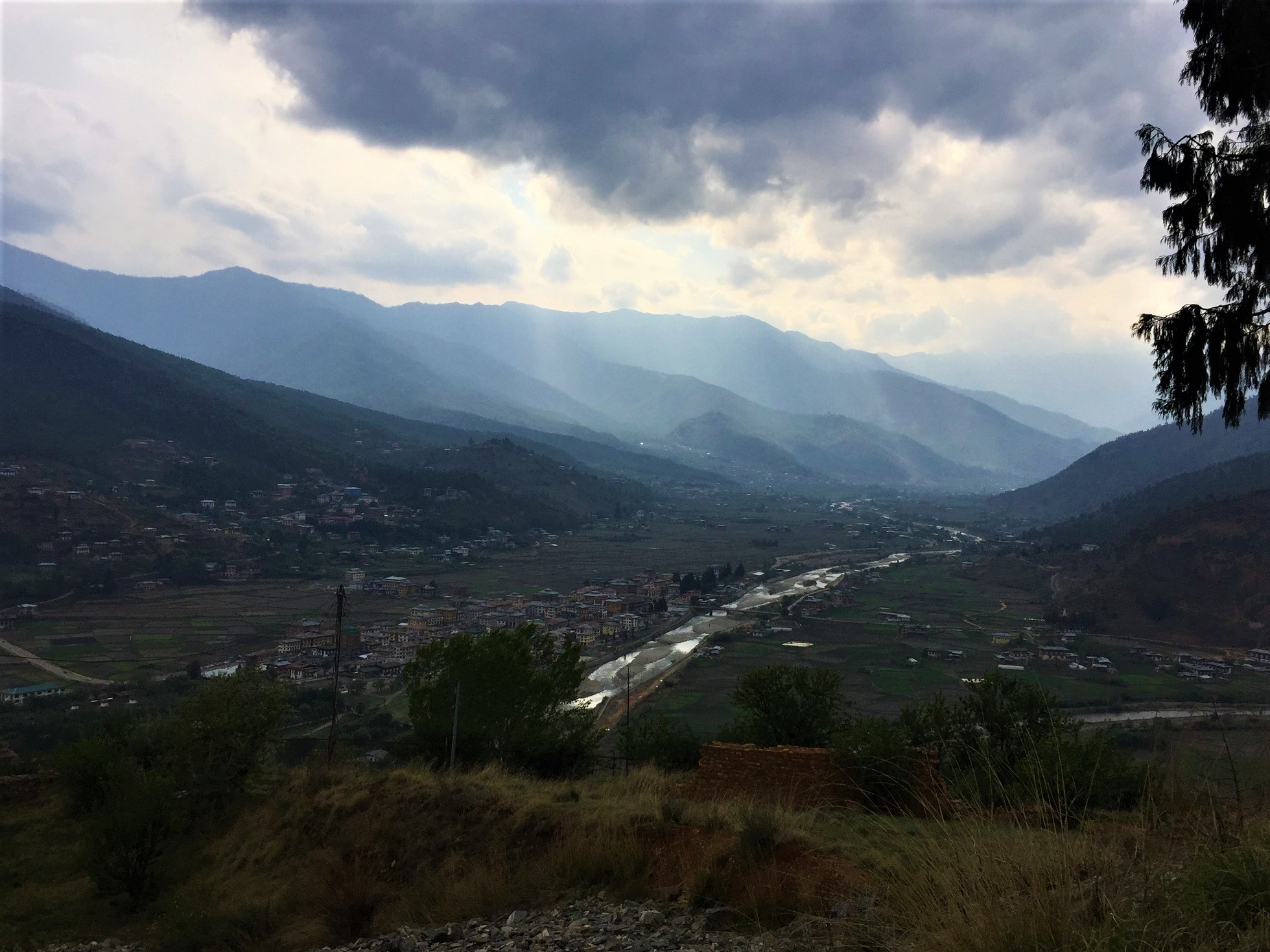
Entering Bhutan was like using time machine with a reverse button. Up until the 1960’s, the country never had any schools, hospitals, roads, currency, electricity, police or courts at all. Yak rearing was the main occupation. It is devotedly Buddhist and they worship their king.
Tourism was only allowed since the mid 70’s but fewer than a couple of dozen a year arrived. Even today, tourism is not exactly encouraged – the policy is high value, low impact. You have to pay a set fee per day to the government to visit. While it used to be obligatory to wear the national costume every day, most people still do anyway. Crime is virtually non-existent and instead of a GDP, success is measure as a Gross National Happiness (GNH) index.
We would spend our first day in the capital, Thimphu. The drive from the airport was along the river valley road with magnificent views to the verdant mountains, suspension bridges and flapping prayer flags.
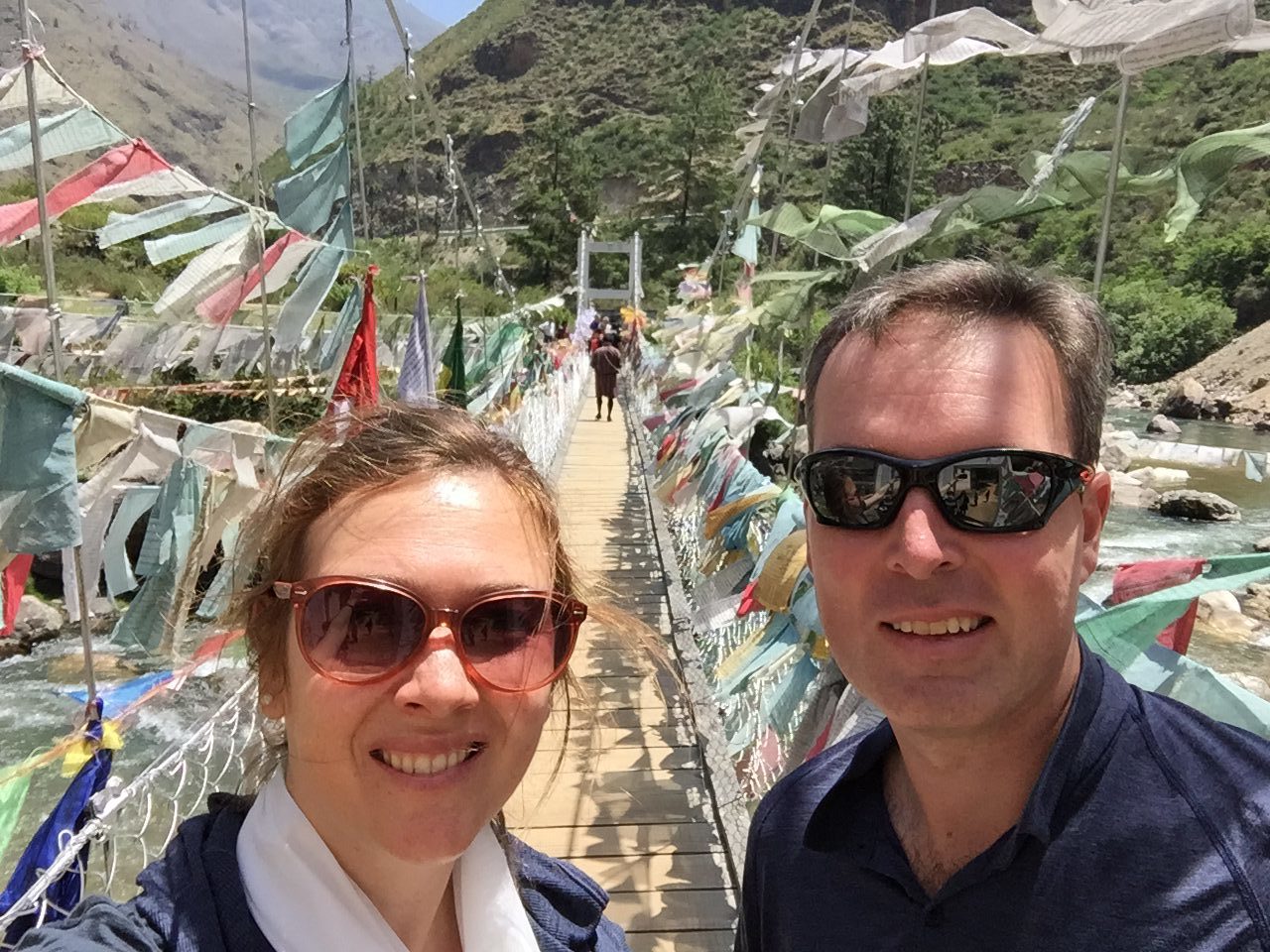
One of our first stops was a giant stupa in the middle of town. Strangely there seemed to be a lot of old people hanging about like teenagers outside a video arcade. It turns out that this garden and stupa is actually like a kindergarten for pensioners. Because the elderly live with their children, they get “dropped off” at the stupa while their children go to work. It was hilarious to see them all chilled with their friends, some just sitting, some spinning prayer wheels and others doing laps around the stupa.
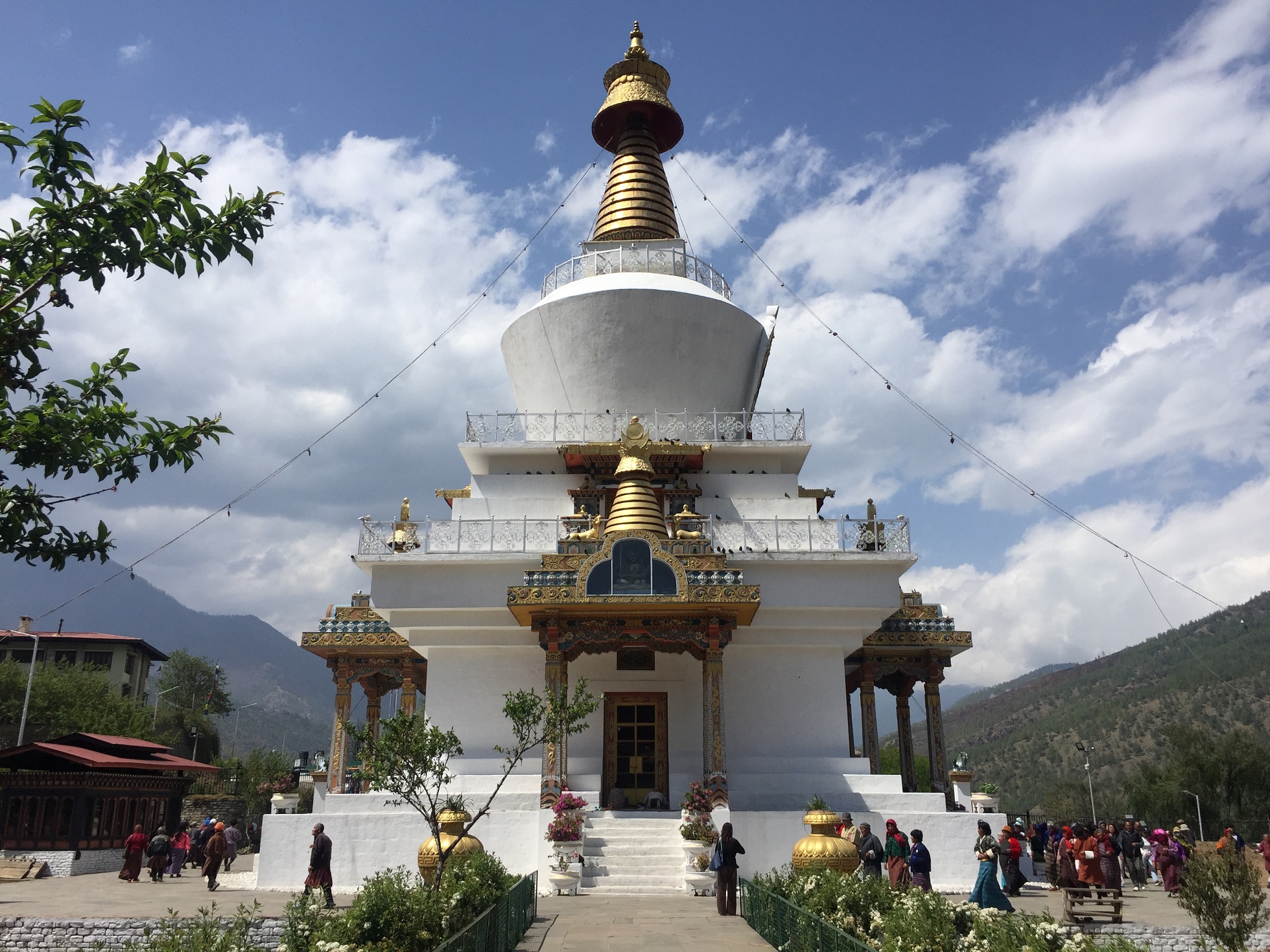
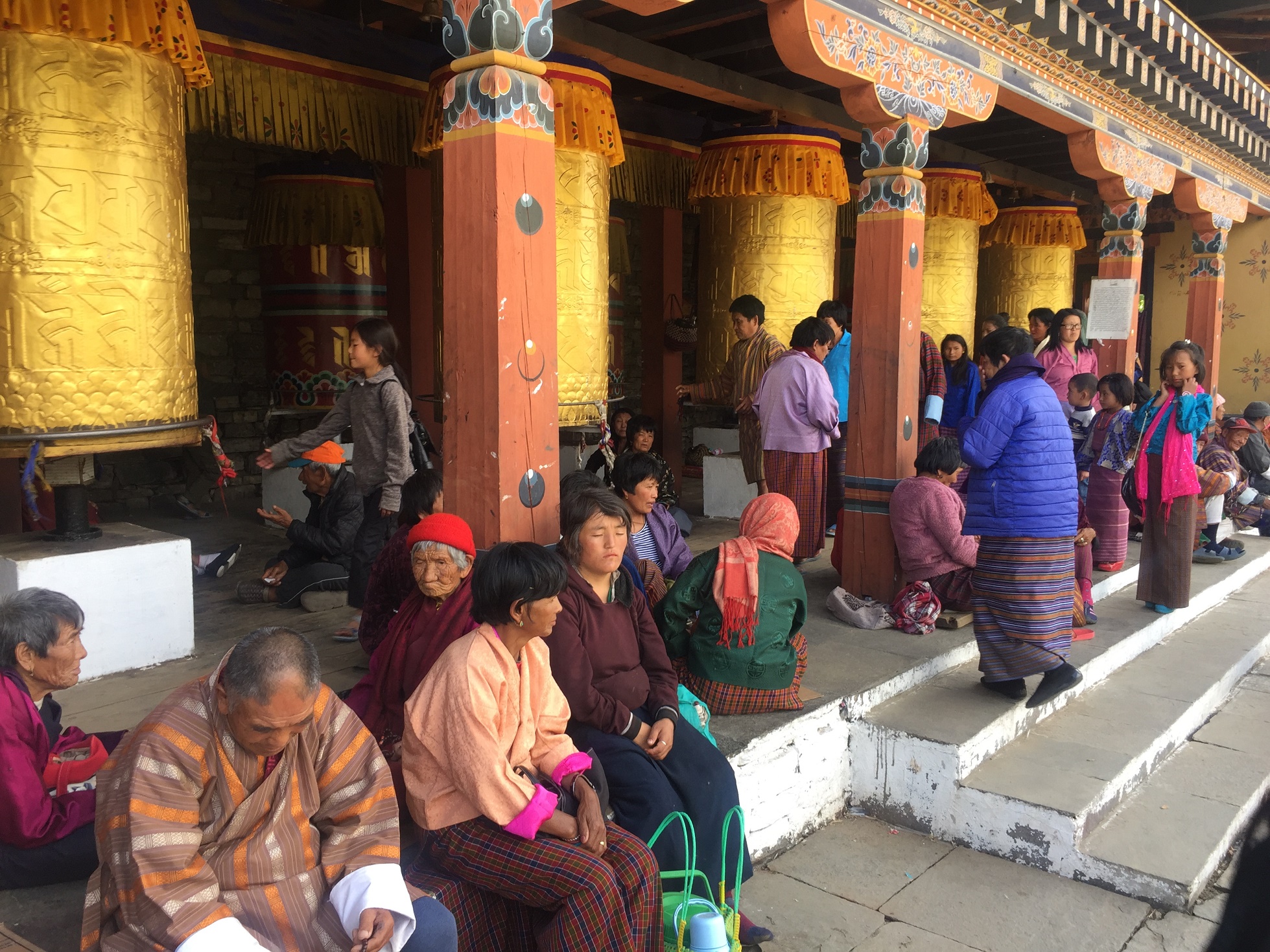

Our next stop was a visit to the Giant Buddha overlooking the Thimphu valley. A fairly recent addition (in fact so recent they have yet to finish building the paving around it) the statue stands over 50m tall, made of bronze and is gilded in gold. Inside they plan to have a further 125,000 smaller gold statues of Buddha. The meditation hall inside was so over the top kitsch with every surface painted gold, I thought it took away from the stunning image of one of the largest statues of Buddha in the world.
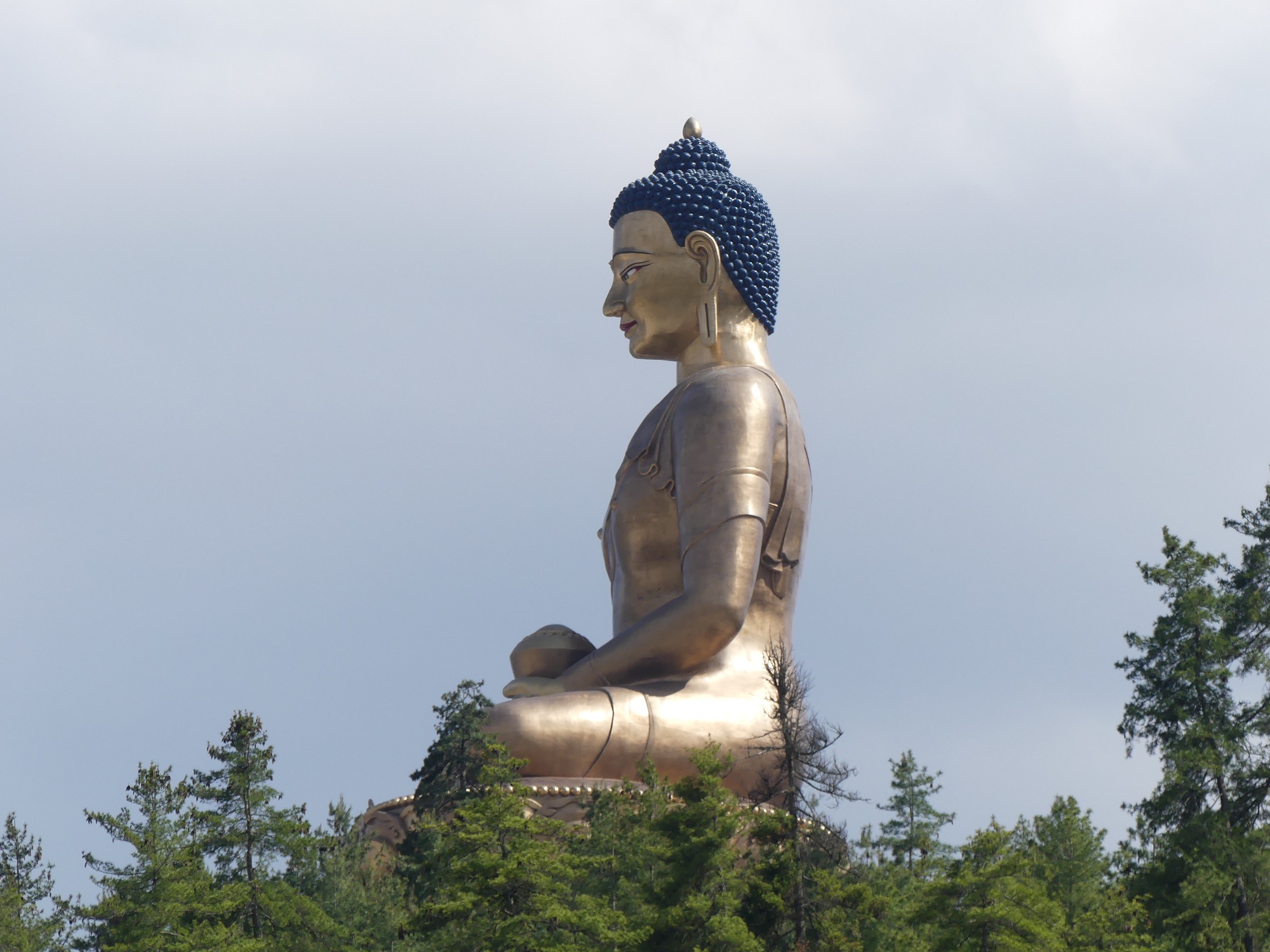
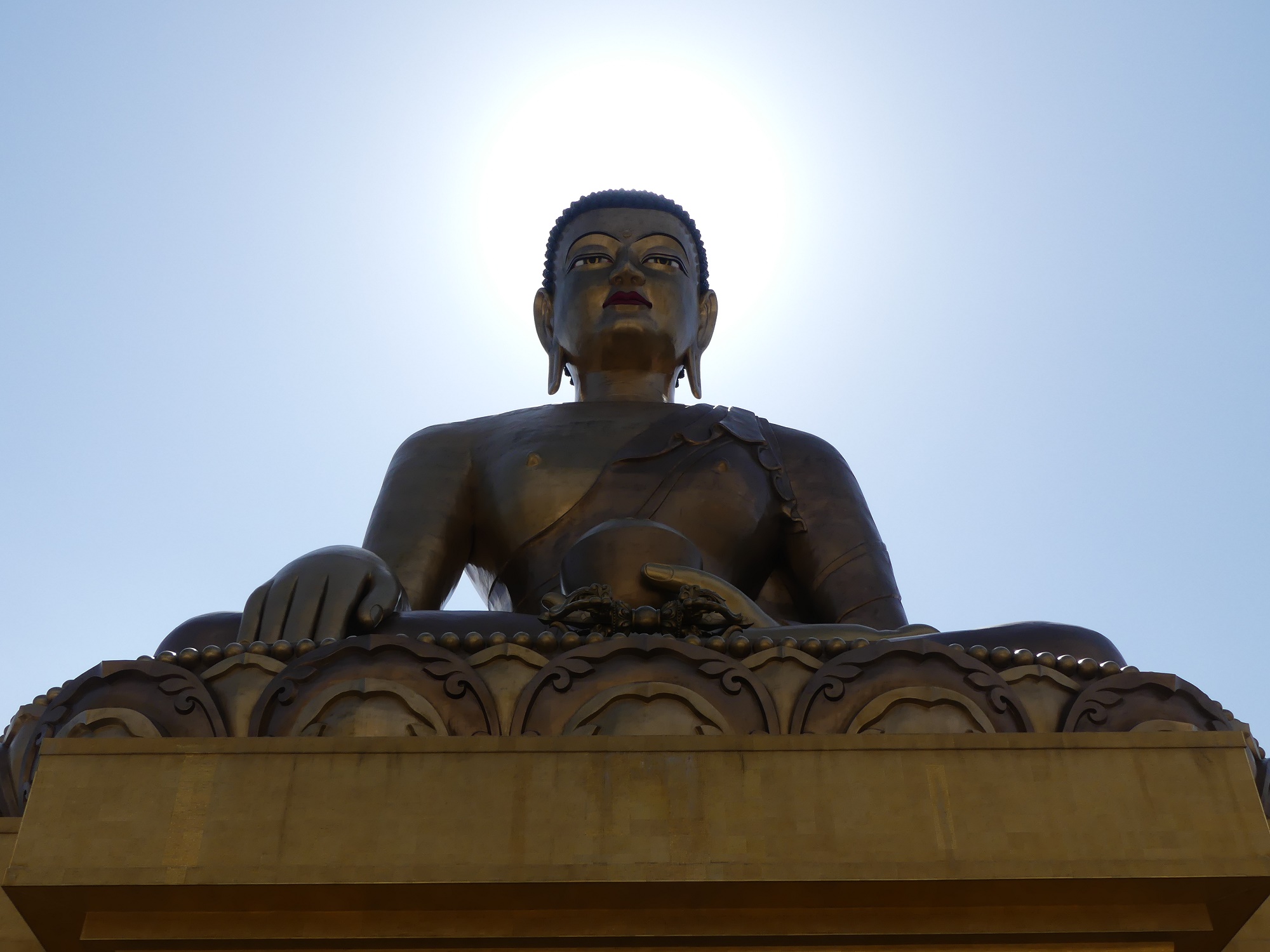
We visited a temple and a nunnery that seemed so much more authentic than those in Tibet. In Tibet, monastery visits seemed like visiting a museum or tourist attraction. In Bhutan, the Buddhism practised is more like a way of life. In truly affects the national psyche of how people relate to their environment and to others. We had only been here a few hours but we both loved it.
